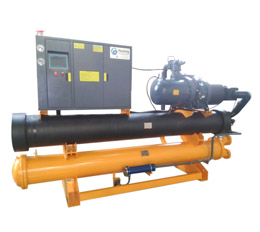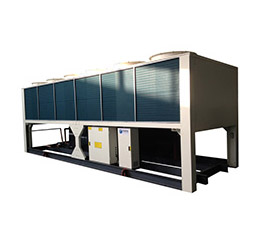- Home
- Products
- About Us
- News
- Project
- Video
- Soliutions/Oem/Custom
- Contact Us
Chiller removes heat from a load and transfers it to the environment using a refrigeration system. This heat transfer device is the preferable cooling machine in power plants and other large-scale facilities. It is simply a system consisting of ethylene + water or water reservoir and circulation components. The cooling fluid is circulated from the reservoir to the equipment undercooling. There are also air-cooled chillers, which disperse heat-using fans. These are more recent and common in power plants. In this post, we review the difference between the two technologies, leaving the choice of which one to pick to you. Huazhao would be happy to help you in the decision making process.
Water-cooled chiller systems have a cooling tower, thus they feature higher efficiency than air-cooled chillers. Water-cooled chillers are more efficient because they condense depending on the ambient temperature bulb temperature, which is lower than the ambient dry bulb temperature. The lower a chiller condenses, the more efficient it is. This system has several essential components including:
Cooling towers
Condenser water pumps
Make-up water pumps
Chillers
TES reservoirs

What are the benefits of a water-cooled chiller? Some users may prefer these chillers because of the smaller size they occupy as compared to air-cooled chillers. These chillers also feature higher efficiency and last longer than the mentioned alternative. Those who would like the equipment to be placed indoors may find the water-cooled machine desirable.
The role of the evaporator is to produce chilled water. The device releases the water at about 6°C (42.8°F) and pushes it throughout the facility with the help of a pump. A network of pipes passes the chilled water through every necessary section of the building. After exchanging coldness with room air, which blows across the Air Handling Units (AHU’s) and fan coil units (FCU’s), the water is now warmer at about 12°C (53.6°F). It returns to the evaporator where the refrigerant absorbs the unwanted heat and directs it to the condenser. The chilled water is cool once again and it can now continue to cool the facility. Note how this is called “chilled water” throughout no matter the temperature.
A refrigerant brings unwanted heat from the evaporator and passes through the condenser. There is another loop connected to the condenser- the condenser water loop, which is between the cooling tower and the condenser. After entering the condenser at about 27°C (80.6°F), the water leaves at 32°C (89.6°F) and heads to the cooling tower. Note that at no time do the refrigerant and the condenser contact directly. Heat exchange is only through a pipe wall. The condenser water, with the unwanted heat, goes to the cooling tower for further heat rejection.

This is where the unwanted heat in a facility ends up. A large fan feeds the unit with air. The air meets with the oncoming condenser water. From the direct contact, the condenser water loses heat to the air. The condenser water goes back to the condenser the cycle continues. These open-topped devices come in many designs depending on many factors. Examples are cross flow, counter flow, natural draft and mechanical draft. Stay with us for coverage of these designs in upcoming posts. This is a good way of settling the cooling tower vs. chiller confusion. However, if you still need more details about the water-cooled chiller components and operation, reach out to our team and you will get help. Now, compare it to the air-cooled chiller discussed below.
Where aesthetics and environmental conditions or water access restrictions exist, the air-cooled chiller may be applied. Both air-cooled and water-cooled chillers depend on an air stream as a means of heat transfer. The difference is that the water-cooled chillers or rather the cooling towers use a humid air stream (ambient air stream + water spray) while the air-cooled chillers use a current of ambient air.The series air cooled screw type chiller cooling capacity from 85KW to 1550KW. This series units integrates the characteristics of many other products, using imported semi-closed screw compressors,supplemented by high-efficiency heat exchangers and adopts microcomputer controllers, which makes the unit compact, reasonable layout, convenient to use and maintain.
Copyright © Water Cooled Chiller, Water Cooled Scroll Chiller Supplier China All Rights Reserved | Sitemap